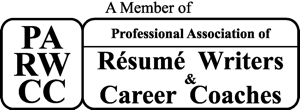iStockphoto.com | MonkeyBusinessImages
As a resume writer and a career coach I get a lot of questions about a variety of job-related topics, but they're not necessarily so detailed that they require a full-length article to answer them. Here's some of my favorite job hunting FAQs. Enjoy!
Question: How do I reject an internship offer?
Answer: Turn it down with absolute grace and gratitude. The company who offered you the internship may be a potential employer in the future. Call the person (as in pick up the phone and make a call, not email, not text) who extended you the offer. Express to them that you very much appreciate the offer, and loved the experience with their organization, but you have selected at this time to pursue another internship which is a better fit for reason X (location, alignment with career path, whatever, so long as you don’t make it about the compensation). And thank them very much for the consideration. Then stick the recruiter’s contact information in your files. You never know what the future may hold...
Question: Should I include self-study on my resume? How do I do so?
Answer: If you’ve studied topics which are directly relevant to your employability, you should indeed add them. Online classes or correspondence courses (does anyone still use this term?) should go under “Training & Education”. List the provider and the subject matter. Self-guided reading, such as a book, can go under another section that you add under something called “Self Study” or “Advanced Independent Studies.” In any case, if you put it on the resume, it’s fair game for an interviewer to ask you detailed questions about it. Prepare accordingly.
Question: What's a complete deal-breaker on a resume?
Answer: That’s an interesting question. There’s no single, consistent deal breaker when it comes to the resume. I’ve seen hiring managers toss resumes aside for grammatical and spelling errors, job-hopping, unappealing past or current employers, lack of required skills, or some other vaguely articulated attributes. That said, the hiring manager’s decision is usually about filling a need. If you’ve got a really unique skill (for example, you know a required programming language or software package that’s not widely adopted yet) and they need your skill badly enough, they may be willing to overlook all the other stuff in order to stem the bleeding. It happens – but don’t count on that. You can optimize your resume by minimizing errors and enhancing your accomplishments. And it’s a lot easier to get a hiring manager to say “no” than “yes.”
Question: Should I try to bypass the recruiter and apply for a job directly?
Answer: There are actually two questions here:
- Should I go around an agency (ie, outside) recruiter who presents me the job? No. That’s a violation of trust, since they found you and introduced you to the role, and by going around them you’re taking money out of their pocket while putting the hiring company in the uncomfortable position of having to arbitrate how, exactly, they received your resume.
- Should I go around the corporate (i.e., in-house) recruiter? Yes. The hiring manager and the recruiter are all on the same side here. Apply online first. Then send a note through LinkedIn or email to the hiring manager letting them know that you’ve applied and have the skills they’re looking for. You could be presenting the solution to their staffing issue.
Question: What is an acceptable time frame to request of an employer for responding to an offer?
Answer: There’s no single answer to this. The “standard norm” is two weeks, but there’s no hard and fast number of days. Be smart about this. If you’re serious about the job offer, and you have nothing else on the table, asking for a couple weeks looks really iffy to an employer and they may pull the offer based on your lack of interest. If you know you want the job, and you are clearly communicating that you want the job, then ask for a couple days to talk it over with your better half so that you don’t look desperate. But a quick “yes” will build goodwill for you upon entry. If you have other parts in motion - other employers you’re waiting to hear from, for example - try to be up front with the offering company in such a way that you will not burn any bridges. Say something like, “I have a lot of irons in the fire right now, and I’m very, very interested in this offer. But I do have some other considerations - can I have until x date to provide you an answer?” And if you don’t feel like explaining yourself, go ahead and ask for the two weeks to think about it. The company will tell you if that’s acceptable.
*All of these responses by the author previously appeared on Quora.com under his own responses.
Scott Singer is the President and Founder of Insider Career Strategies Resume Writing & Career Coaching, a firm dedicated to guiding job seekers and companies through the job search and hiring process. Insider Career Strategies provides resume writing, LinkedIn profile development, and career coaching services, including a free resume review. You can email Scott Singer at scott.singer@insidercs.com, or via the website, www.insidercs.com.






